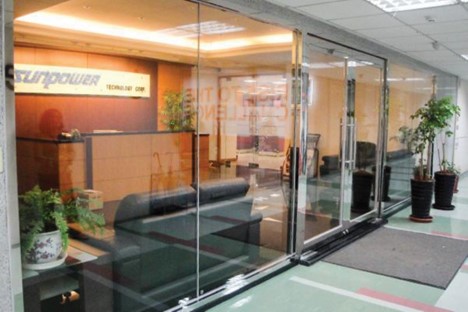As building safety codes evolve to meet new challenges, fire-resistant glass has become an indispensable tool for architects and contractors. However, selecting the right product for your project can be confusing with the various types available. Here, we will focus on widely used varieties—E, EI, and EW glasses—and emerging smart fire-resistant glass technology.
Read on to learn how the right fire-resistant glass choice can balance visibility, insulation, and life safety in your next build.
What is Fire-Resistant Glass?
When building safety is a priority, fire-resistant glass is an important option to consider. This speciality glass undergoes treatment with fire-retardant materials that substantially delay the effects of fire, smoke, and heat. Installed in walls or openings, fire-resistant glass creates a protective barrier containing fires, preventing spreading for longer periods than ordinary glass.
Those extra minutes can save lives in a fire emergency by giving people time to evacuate safely. The glass also insulates the heat. So, the other side stays cooler and livable for longer than the side that is directly exposed. Properly installed fire-resistant glass works hard to “compartmentalise” damaging fire effects through its specialised resistance technology.
Which Fire-Resistant Glass to Choose
AIS Boropane is a robust and heat-resistant glass made with boron trioxide. Even when exposed to high heat from fires, this special glass stays completely see-through instead of getting cloudy or opaque. The boron trioxide, which makes up 15% of the glass, enables it to withstand fire without cracking or breaking. So, Boropane keeps its integrity and transparency if a fire erupts, making it a safer glass product for buildings and other uses.
Some of the benefits of Boropane glass are:
- When temperatures change, Boropane glass expands and contracts less than normal glass. This feature keeps the glass intact even when exposed to high heat.
- It stays transparent for 2 hours during fire instead of turning opaque or breaking, giving people more time to exit safely.
- Blocks the spread of flames, smoke, and gases during a fire. This prevents more oxygen from feeding the fire and toxic fumes from spreading.
- It looks more transparent than regular glass because it contains fewer impurities. It provides better aesthetics for buildings and displays.
- Its low soda content makes it 3 times stronger than standard glass. So, it resists cracking from heat or physical impacts. This durability improves safety.
AIS Pyrobel, a high-quality fire-resistant glass solution designed to minimise the risk of fatalities in case of unexpected fire breakouts. With years of experience providing specialised glass products, AIS understands each building has unique fire safety requirements.
Some of the benefits of Pyrobel glass are:
- Pyrobel glass is available in bigger custom dimensions than regular glass, enabling large windows or panels as needed by applications.
- It demonstrates exceptional light transmission across thickness and substrate options. This enables crystal-clear visibility and brightness.
- In addition to fire resistance, Pyrobel glass is durable against mechanical impacts, water penetration, and long-term UV exposure from sunlight.
- The panels undergo Heat Soak Testing to eliminate nickel sulfide impurities that can cause spontaneous glass fracture. This ensures long-term reliability.
Essential Areas for Fire-Rated Glass Application in Home
- Entry Doors: Fire-rated glass in front and back doors prevents exterior fires from spreading inside. It also provides extra time to evacuate while limiting smoke infiltration.
- Windows: Strategic windows facing fire risks, such as dense bush, should be fitted with fire-rated glass. This might include basement windows or upper-level windows in fire-prone zones.
- Interior Openings: Open-floor-plan homes benefit from fire-rated glass divisions between the living room/kitchen and bedroom/hallway openings, which slows internal fire/smoke spread.
- Garage Entry: Fires often start accidentally in garages and then spread to the residence. Fire-rated glass doors and windows are critical to compartmentalizing garage fires.
Conclusion
Selecting the right type of glass for your building’s safety is important. Choosing a type of glass that can protect you from fire and keep you safe is crucial. For help choosing fire-resistant glass for your project, contact the experts at AIS Glass. We can help you choose the most suitable glass for your building and ensure you’re well-protected in case of any fire hazard.

